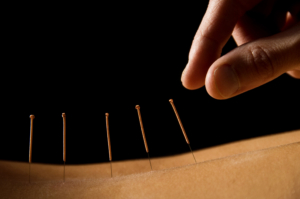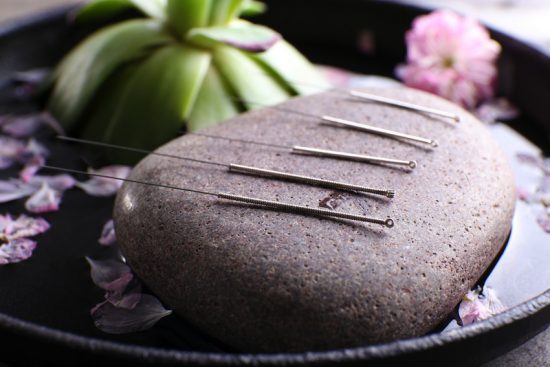
Modern medicine has been described as the greatest gift to mankind. While its role is different, I think acupuncture is just as precious a gift. This safe, simple treatment has been used by millions in China for thousands of years. Our methods are heavily influenced by this system, and it is likely to play a major role in the healthcare of the future. While researchers are still figuring out how to study acupuncture, many people swear by it because seeing is believing. And what I have seen is truly amazing!
In the right hands, when inserted in the right spots, these fine needles flip switches in the body that restore balance, reduce symptoms and improve lives. If you want to get the best results from acupuncture, or from any treatment you get from a therapist, you should follow a few important rules.
HOW IT WORKS
Acupuncture is based on the meridian system that is one of the key pillars of Traditional Chinese Medicine. These are described as channels along which energy, or qi, flow in the body. Medical science has struggled with this concept because anatomists who dissect the body have looked for meridians – and they just can’t find them.
One of the key insights about the body that has emerged in recent years is that these channels are created by fascia. This is the shiny, smooth tissue that covers a chicken breast. It is made of collagen, and it wraps around muscle groups in long sheets that travel from your head to your fingers and toes. Collagen itself is like a loudspeaker, turning the electrical waves of your nervous system into mechanical waves – sound vibrations.
Injuries and trauma can alter the nervous system, and this can create very subtle changes in tissue. The areas of tightness in these areas act like fingers on a guitar string – they stop vibrations from traveling in the body. These are described as obstacles or blockages in acupuncture, and they play a key role in helping explain the mysteries of vibrational medicine.
While these concepts are not yet known in mainstream medical circles, science has documented many clear effects of acupuncture on the body. It affects endorphins, cortisol and other chemicals, acting on the nerves, the spine, the cortex and the deep brain. There is no doubt that acupuncture works.
There have been dozens of large randomized controlled trials that demonstrate that acupuncture works. The problem is that ‘placebo acupuncture’ seems to work quite well too. This has made researchers rethink the notion of a placebo for this kind of treatment. Unlike pills, placebo therapies still have measurable effects. Where a needle is inserted, how it is manipulated, and who is doing it can all have an important effect.
GIVE ACUPUNCTURE A TRY – BUT DO IT RIGHT
I often recommend acupuncture for my patients with symptoms related to pain and the brain. This is a no-brainer. We have no good drug therapies for most of these problems, and acupuncture as a therapy is ideally suited to the nervous system.
Many people tell me that they have already tried acupuncture and it did not help them. I tell them there is no such thing as ‘trying acupuncture’. Acupuncture is an instrument, and how it is used makes a huge difference. If you give me a violin, I can’t do much with it. But in the hands of Itzhak Perlman or Lindsey Stirling, it creates intense emotion and beauty.
This is one of the key differences between prescription drugs and therapies. The therapist matters. When you undertake a therapeutic trial – which is what we call it when you test out a new treatment to find out if it helps you – you are not really trying acupuncture, or massage, or chiropractic, or hypnosis. Results do differ because of the instrument – but they also differ because of the musician.
This is one of a few key rules that I recommend patients follow with a new therapy:
1. Try therapies that you believe in. Studies show that any treatment will work better if you expect it to. This includes antibiotics, surgery, acupuncture and hypnosis. If those therapies fail, try to be more open-minded and explore treatments that you would not typically consider.
2. Choose to trust in your provider. Many people are mistrustful by nature. Skepticism is a defence mechanism for many people, especially if they are scared or insecure. Don’t let this ruin your treatment experience. Many exceptional healthcare providers – including some doctors – don’t necessarily have the best bedside manner. They might not explain things the way you need to hear them. They might have a messy office, or have poor fashion sense. Give your provider the best chance of success by trusting them. The science of the placebo response tells us that this will make your treatment more effective.
3. Be clear about your treatment trial. I tell most patients with chronic problems that a proper trial of acupuncture is 12 sessions. For more minor problems, 6 sessions will do. These should be done at twice per week – three times per week if possible. If you cannot adhere to this regimen, you cannot expect to see results. Taking one or two antibiotic pills will not rid you of a pneumonia. One or two acupuncture treatments is not enough to judge whether it is working or not.
4. Follow the instructions you are given. On the days you receive acupuncture, you are typically advised to drink hot water, gentle stretching, relaxation and clean, plant-based food. Avoiding alcohol, coffee, greasy or fried foods is important. These things can make the difference between success and failure. For many people, this boils down to how serious they are about returning to health.
5. Continue treatment only if you are improving. Most therapies will make you feel better for a few hours, or perhaps for the rest of the day. As a physician I have to say that this is not enough. I want to hear patients telling me that their benefits are starting to last longer and longer, or that their level of function is improving. If this is not happening, you should either change therapies, or therapists. It may also be useful to try a different approach to treatment with the same therapist, but if you are not seeing progress, doing more of the same makes no sense.
6. If at first you don’t succeed, try and try again. While it is incredibly healing to accept the situation you in are right now, that does not mean that you will be in it forever. While some problems are tougher than others, healing is possible for everyone. But it is up to you. Doctors and therapists are there to help, and they can show you the way and give you the tools you need to get there, but the journey is yours. These treatments take time, and they cost money. You may think you don’t have the money, or the time, or the willpower and discipline you need to get there. But where there is a will there is a way. Try one thing after another until you get there.
When I packed my bags for Costa Rica to work on our development projects there (stay tuned for our next newsletter to find out more), I tossed a box of acupuncture needles in my backpack. I always do. A box of 1000 needles costs $30, fits in a purse, and lasts for decades. This great treatment is truly a global health solution. And it may be a great solution for you.

